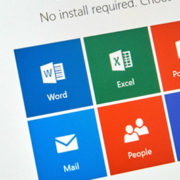6 Signs Your IT Network Isn’t Healthy
Let’s start with the obvious. If you’re reading this, there’s a fair chance you’re already concerned about your IT network.
We sincerely wish we could assure you that your network is most likely fine, but we talk to business owners every day who are dealing with network issues. Sometimes the fallout is nothing more than a minor inconvenience—and sometimes it brings business to a screeching halt.
After all, downtime is an ROI killer.
The truth about downtime.
IT network downtime cuts into profitability faster than the Kardashians can put a spin on their latest public drama. When your technology is offline, you’re dead in the water. Your staff can’t work. Your customers can’t get answers. You may not even have phone service.
Last year CNN reported that the average cost for IT network downtime for small businesses dealing with ransomware attacks exceeds $100,000. And cyberattacks are just one of the things that can lead to network downtime.
In fact, basic hardware and software maintenance is more critical than you might think. Much of the time, you’ll have ample warning that your IT network is in trouble. You just have to know what warning signs to look for, and you have to understand how important it is to heed those warnings.
When we ignore warnings.
Historians have called it a turning point in the conflict— “the moment this contest became a true world war.” Then-president Franklin D. Roosevelt called it “a date which will live in infamy.” Without question, the Japanese attack on Pearl Harbor shook our nation to its core.
And yet, there’s a distinct chance it could have been avoided. Before the attack, the U.S. received at least four different warnings from credible sources that the Japanese were planning a surprise attack on the Hawaiian naval base.
As it turns out “one of the worst intelligence failures in American history” wasn’t an intelligence failure at all. There were plenty of warnings. They were just ignored.
The painful lesson of Pearl Harbor is clear. When we ignore clear warning signs, bad things happen.
6 IT network warning signs.
There’s an oh-so-subtle trick to heeding IT network warning signs. You have to know what they are. Once you know what to look for, IT network warning signs aren’t hard to spot. In fact, they tend to stand out.
If you’re dealing with any of the following red flags, it’s probably time to take a closer look at your IT network—or call on the help of a reliable IT consultant to get your network back up to speed.
 1. Things Are Moving Slower Than Normal
1. Things Are Moving Slower Than Normal
Let’s say the folks at your office use a shared drive for big files—something like image files. Normally, you can access the shared drive in a matter of a few seconds. Downloading even a large file rarely takes much longer.
And then one day, it takes four times as long.
Changes in IT network speed are often indications of some kind of problem. The server may have an issue, or you may need to tend to your network cabling. It could even be your Wi-Fi connectivity. The one thing you shouldn’t do is just suffer through it. Slow network speeds are typically a symptom of some other issue.
 2. Moody Wi-Fi
2. Moody Wi-Fi
Speaking of Wi-Fi, if you find your connection dropping on a regular basis, there’s likely a reason for that. Wi-Fi technology is well past the testing phase. Once your wireless IT network is set up and configured, it should be reasonably stable.
We’re always surprised at how often folks blame individual devices. “I just thought my phone was acting up.” Or, “Well, my computer is old.”
If you’re in doubt, ask around. When others in your office are experiencing the same kind of wireless drops, that’s not a coincidence. It means something’s wrong.
 3. Reboot. And Reboot Again. And Again . . .
3. Reboot. And Reboot Again. And Again . . .
If you’ve ever called an IT helpdesk, you know the routine. One of the most common troubleshooting techniques is so simple it’s annoying. Reboot.
But rebooting a computer (or server) can fix a lot of problems. Similarly, if you’re having issues with a specific application, closing it and reopening it often clears things up. When you restart (your computer, server or an application) “the code can start from square one and hopefully it won’t encounter the same problem again.”
But you shouldn’t have to restart constantly. If you do, that’s a sign of an ongoing problem, not a one-time hiccup.
 4. It’s Getting Hot in Here
4. It’s Getting Hot in Here
A common hardware failure warning sign has to do with the temperature.
Most IT network hardware produces heat. That’s why computers have fans—to help disperse that heat and keep the delicate inner workings at a comfortable temperature. If there’s too much heat, it can damage hardware.
Here’s what to look (and listen) for. If your computer’s fan is running on high all day, that’s a bad sign. If your laptop or desktop is physically hot to the touch, that, too, is not a good sign. And if any piece of hardware shuts down due to heat, pay attention.
It’s much more convenient to replace hardware before it fails than to scramble for a replacement after the insides have melted.
 5. Too Many Workarounds
5. Too Many Workarounds
Working with business owners, this is a symptom we see all the time. Something about the IT network isn’t working properly. Maybe there’s an ongoing error message or the printer fails every fourth time someone tries to print something or one of the applications everyone relies on is clearly outdated.
But instead of addressing the issue, the staff just work around it.
If your office has some kind of elaborate plan B to deal with an IT network issue, it’s time to stop accommodating the inconvenience. Rather than changing how you do your job, take care of the underlying issue with your IT network—whether that’s a needed upgrade, routine maintenance or some other fix.
 6. The Worse Warning Signs
6. The Worse Warning Signs
We saved the worst warning signs for last. If you’ve already experienced data loss, hardware failure or a cybersecurity breach, then it’s well past time to assess the health of your IT network.
Any of these three issues means you’ve already suffered through real impact to your business. You’ve likely incurred downtime, lost opportunity, and maybe even a hit to your reputation. Don’t assume lightning won’t strike twice. You’re not in the clear until the underlying problem has been addressed.
Reevaluate the state of your hardware, beef up your cybersecurity, and put together a thorough business continuity plan so you’re prepared in the future.
The writing’s on the wall.
There are times when IT network trouble erupts out of the clear blue. But the vast majority of the time you can see it coming—if you know where to look.
One of the best ways to proactively maintain your IT network is to keep an eye out for these warning signs. If there’s a potential issue, address it before it has the chance to slow your business down.























Leave a Reply
Want to join the discussion?Feel free to contribute!